Features of monobunched toothbrushes and tips for choosing them
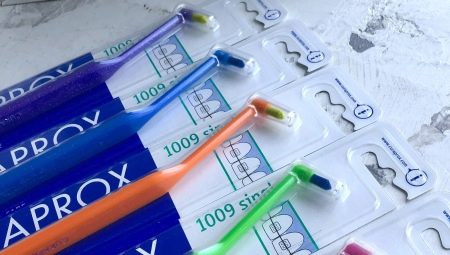
If you have a fixed orthodontic system in your mouth, then it is quite difficult to clean your teeth using usually a toothbrush and toothpaste. To easily clean even the most inaccessible places, you should use a special brush. In this article, we will take a closer look at the features of monobunched toothbrushes, as well as tips for choosing them.
What it is?
Many are not even familiar with such an interesting device as a mono-beam toothbrush, so it is worthwhile to understand this issue in more detail. So, monobunched brush - a device that is equipped with a small rounded head, supplemented by one thin bundle of bristles... The head rests on a slender handle at a 90 degree angle. Such a device allows you to thoroughly clean even the most inaccessible places from food debris and plaque.
The single-tufted brush is ideal for thoroughly cleaning the enamel around braces, wisdom teeth, dental implants, and more.
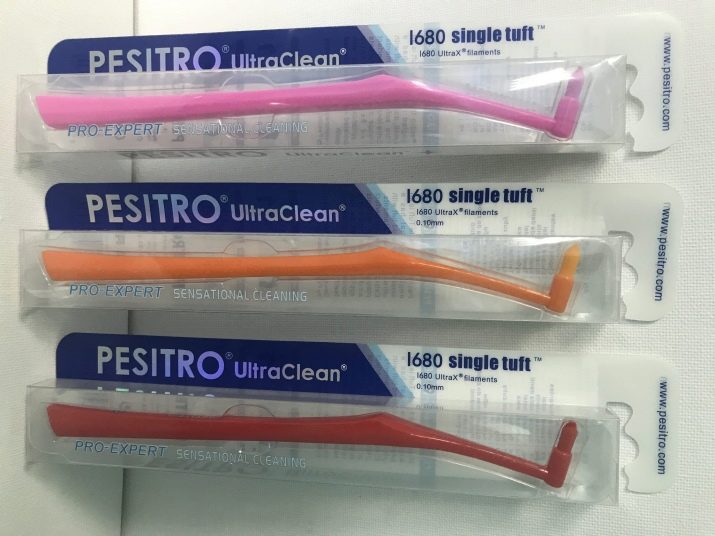
A monobunched toothbrush has the following features:
- it allows easy cleaning, since the head is small and round;
- she allows clean the gingival margin properly, gaps between teeth, grooves and pits in the teeth;
- ideal invention for people who wear braces, implants and other structures that are worn in the mouth;
- enough easy, simple and convenient use such a design;
- practically there are no contraindications;
- small head and long handle will allow you to brush your teeth with ease even in young children.
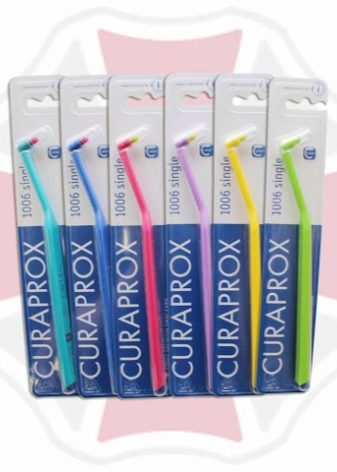

Indications and contraindications
A monobunched toothbrush is suitable for:
- after tooth extraction, there are wide gaps between the teeth;
- for braces, bridges, retainers, implants and other structures that are used for teeth;
- abnormal growth or crowding of teeth;
- for thorough cleaning in combination with other products designed to maintain oral hygiene;
- period after surgery;
- high sensitivity of the gums;
- periodontitis and gingivitis.
There are no contraindications to the use of a single-beam toothbrush. If you have a desire to use it, then choose the best option, and you can be sure that your teeth and gums are reliably protected with regular and high-quality cleaning.

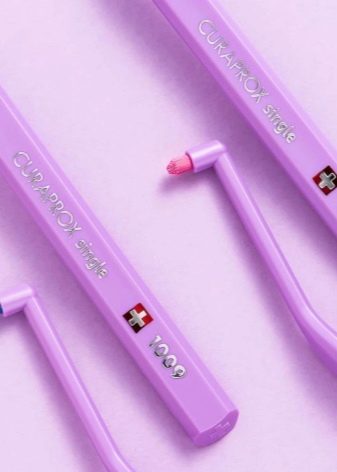
Popular models
Modern manufacturers of single-beam toothbrushes offer quite wide range of products, which allows everyone to choose the best option for themselves. Let's take a closer look at the most popular models.
For adults
- TePe Compact Tuft. This option is characterized by maneuverability, since it has a curved head neck. The villi are 6 mm long and are quite soft. They easily and gently remove plaque from enamel and gums. This model is suitable both for people with healthy teeth and for those who have orthodontic structures in their mouths. The price of the brush varies from 320 to 350 rubles.

- End-tuft from PresiDENT. This beam model has a straight handle and a 90 degree head. The hardness level is medium. The brush is characterized by excellent quality, reasonable price and ease of use. The only drawback is the rather thick bunch.

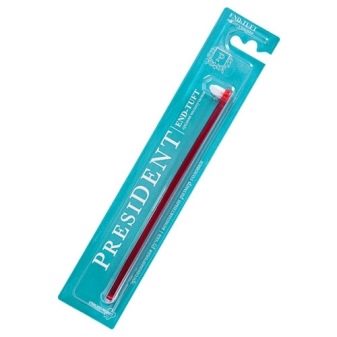
- Pesitro 1680... This is a very popular model among adults, but it can also be purchased for children over 12 years old. With this brush, you can perform spot cleaning, while not touching painful areas, if any. This model allows you to perform high-quality cleaning of any orthopedic structures. It can be used without or with toothpaste. Pesitro offers this model in 8 vibrant colors, so the design is also one of the undeniable advantages. The cost is about 700 rubles.

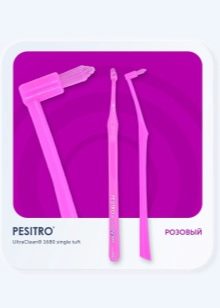
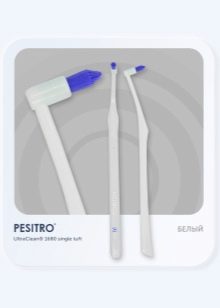
Revyline interspace
This is a great solution for adults. The issue price is only 150 rubles. The brush has medium hardness, it easily cleans even the most inaccessible places. This solution is in high demand due to its affordable price and excellent quality. The beam length is 6 mm. The brush can be used even without using toothpaste.
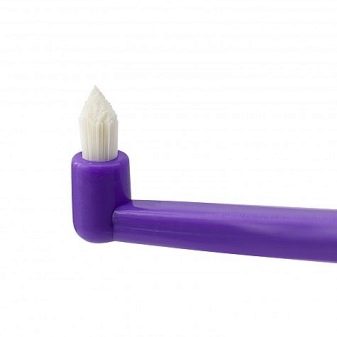
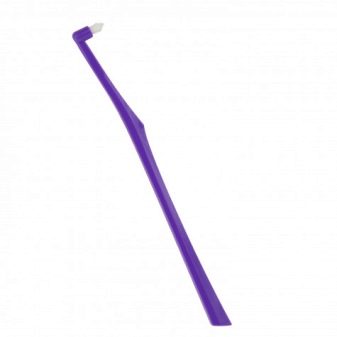
For kids
Children's monobunched brushes are purchased for those who already have dental problems or the presence of a structure in the oral cavity. Many manufacturers create specially designed children's models. For example, a toothbrush from a Swiss manufacturer is in high demand. Curaprox... The bristles are made from the latest generation of ultra-fine polyester fibers, which provide a fairly long-lasting bounce. The length of the setae is 9 mm. This brush is suitable for cleaning implants, braces and attachments. The price of the product is 750 rubles.
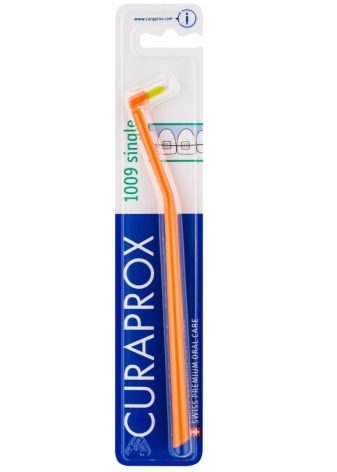
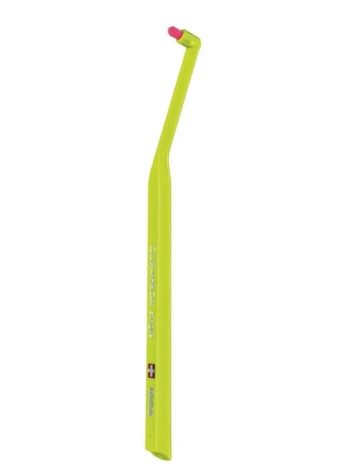
Nuances of choice
In order for a toothbrush to perform all the functions assigned to it with high quality, one should carefully approach its choice, taking into account several criteria.
Hardness degree
There are 5 different degrees of hardness on sale from different manufacturers, which allows the buyer to choose the best option depending on personal preferences. So, the following degrees of rigidity are possible:
- sensitive (0.1 mm) - this category includes brushes with the softest villi, usually they are purchased for children from two to five years old, as well as for people with increased sensitivity of the teeth;
- soft (0.12 mm) - this option allows high-quality polishing of the enamel, while not creating injuries, such a solution is ideal for children from five to ten years old, for pregnant women, as well as for people who have periodontitis or pathology of gingival tissues;
- medium (0.15mm) - this option is recommended for children from 10 years old, for people suffering from caries, as well as for healthy teeth;
- hard (0.17mm) - this choice allows you to thoroughly clean the enamel, preventing the formation of stone;
- extra-hard (more than 0.17 mm) Are the toughest bristles and are ideal for cleaning dentures and braces.

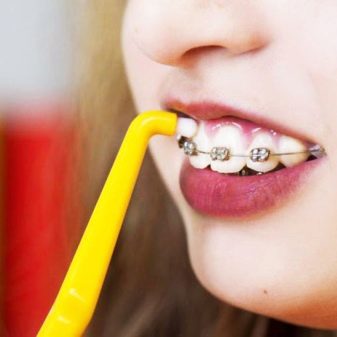
Head type
This is the main element of a toothbrush, therefore, its choice should be approached very responsibly. Sockets with a diameter of 11 mm are the standard choice. If we consider a model for a child, then an option with a diameter of 6 or 7 mm is suitable, but no more. The 9 mm head is very comfortable to use, making it easy to clean even the most difficult to reach places.
Important! It should be noted that the edges of the head should be smoothed, then the possibility of injury to the tissues of the oral cavity is minimized.
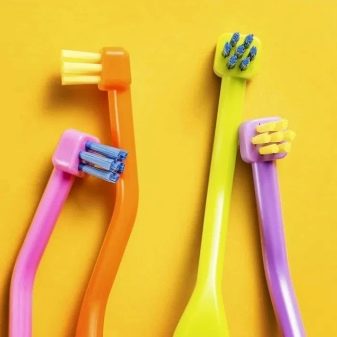
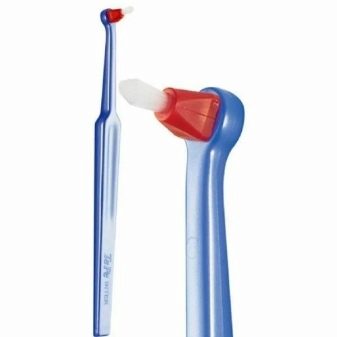
A pen
The best choice is a handle of medium thickness. The presence of silicone inserts ensures that the brush does not slip out during use. Attention must be paid to the neck of the product, since in order to get to hard-to-reach places, it must have a curved shape.
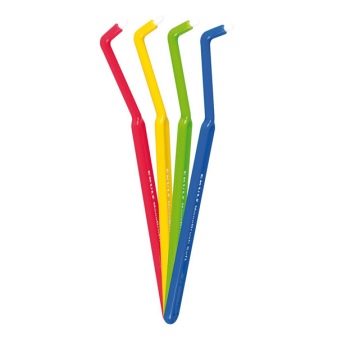
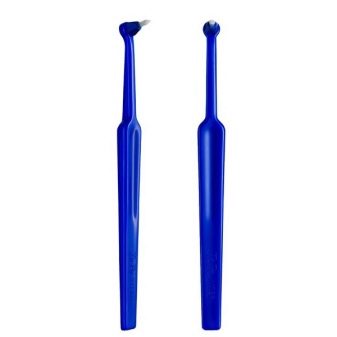
Bristle length
If there are no orthodontic structures in the oral cavity, then the bristle length can be 6 mm. If you have them, be sure to take a model with longer bristles, then the cleaning will be more thorough. The optimal choice is 9 mm.
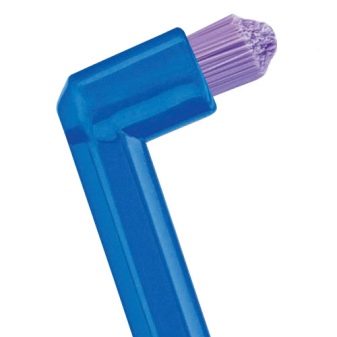
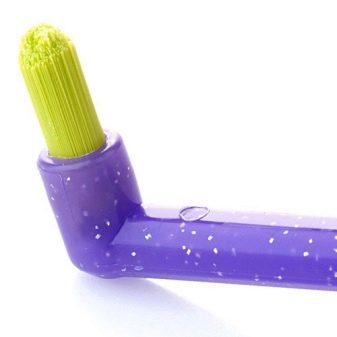
Bristle material
The bristles can be made from natural or artificial material. Natural bristles are soft and flexible. But they also have disadvantages, namely:
- high price;
- bacteria accumulate quickly, since the villi have a shallow structure;
- short service life when compared with synthetic counterparts.
Among the artificial materials, polyurethane and nylon stand out. Compared to natural bristles, they are stiffer and more elastic.
The disadvantage of artificial material is that such bristles quickly lose their shape when in contact with hot water.
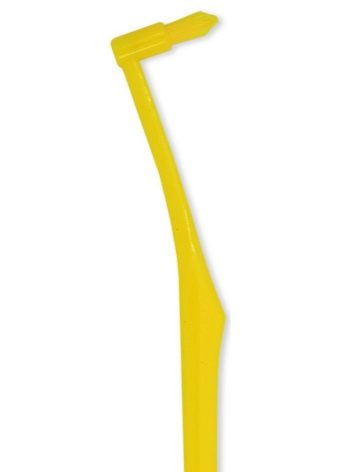

Number of villi
Even the number of villi plays a big role in the selection. If you need a device for an adult, the optimal amount is 1000 pieces.
For a child, it is better to purchase a brush that contains about 700 pieces of bristles.
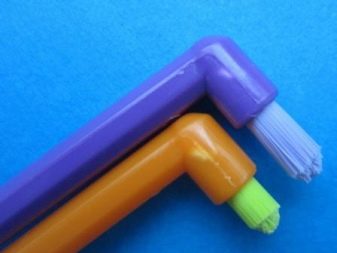
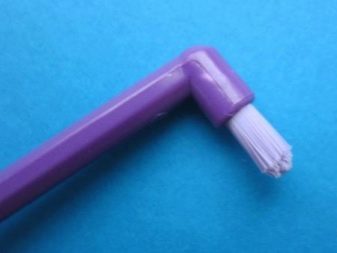
How to use the brush?
To thoroughly clean your teeth with a monobuch toothbrush, you should first read the instructions for use. To brush your teeth as efficiently as possible, you need to adhere to the following algorithm of actions:
- initially worth moisten the brush in water, then it will glide better on the enamel;
- on the head for cleaning you need squeeze out some toothpaste, although you can brush your teeth without it;
- the mouth should be divided conditionally into 4 parts;
- cleaning process is necessary start with the tooth that is farthest away;
- cleaning should be done with circular movementsthat sweep away food debris, while you need to go to the chewing surface from the gum pocket;
- while cleaning, you need to hold the brush at an angle of degrees to the surface of the tooth;
- the cleaning process is worth doing softwithout making strong pressure, then trauma to the surface of the oral cavity can be avoided;
- during cleaning should walk carefully on the outside and inside of the teeth, and also do not forget about the interdental space and the chewing surface;
- front teeth and incisors need special cleaning;
- on average, one tooth should go about 10 seconds;
- so that the cleaning of the oral cavity is of high quality, it is better to combine monobunches and regular brushes.
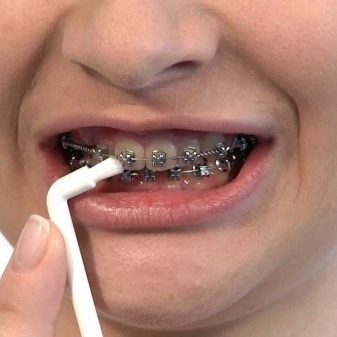
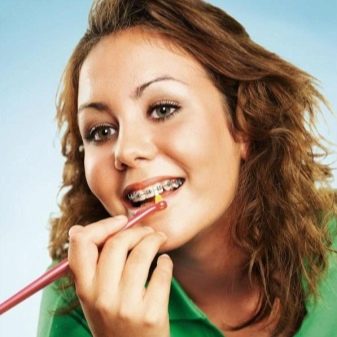
Care Tips
To extend the lifespan of your mono-beam toothbrush, it is necessary to adhere to such recommendations from specialists:
- after each hygienic procedure, be sure to rinse the brush under running water, but it should not be boiling water, warm will be enough;
- an antibacterial agent should be applied every week, the best solution would be to soak the brush for several hours in a solution of "Chlorhexidine";
- for storage it is recommended to use only special containers;
- so that the brush dries quickly after use, it should be placed with its head up - in this way the rate of reproduction of bacteria is reduced;
- if you have suffered an infectious disease, then the toothbrush needs to be replaced;
- the term of use of the monobunched brush is no more than three months, if you neglect these rules, then in the future all sorts of pathologies of the oral cavity may arise.
For information on how to choose a mono-beam brush, see the video.








